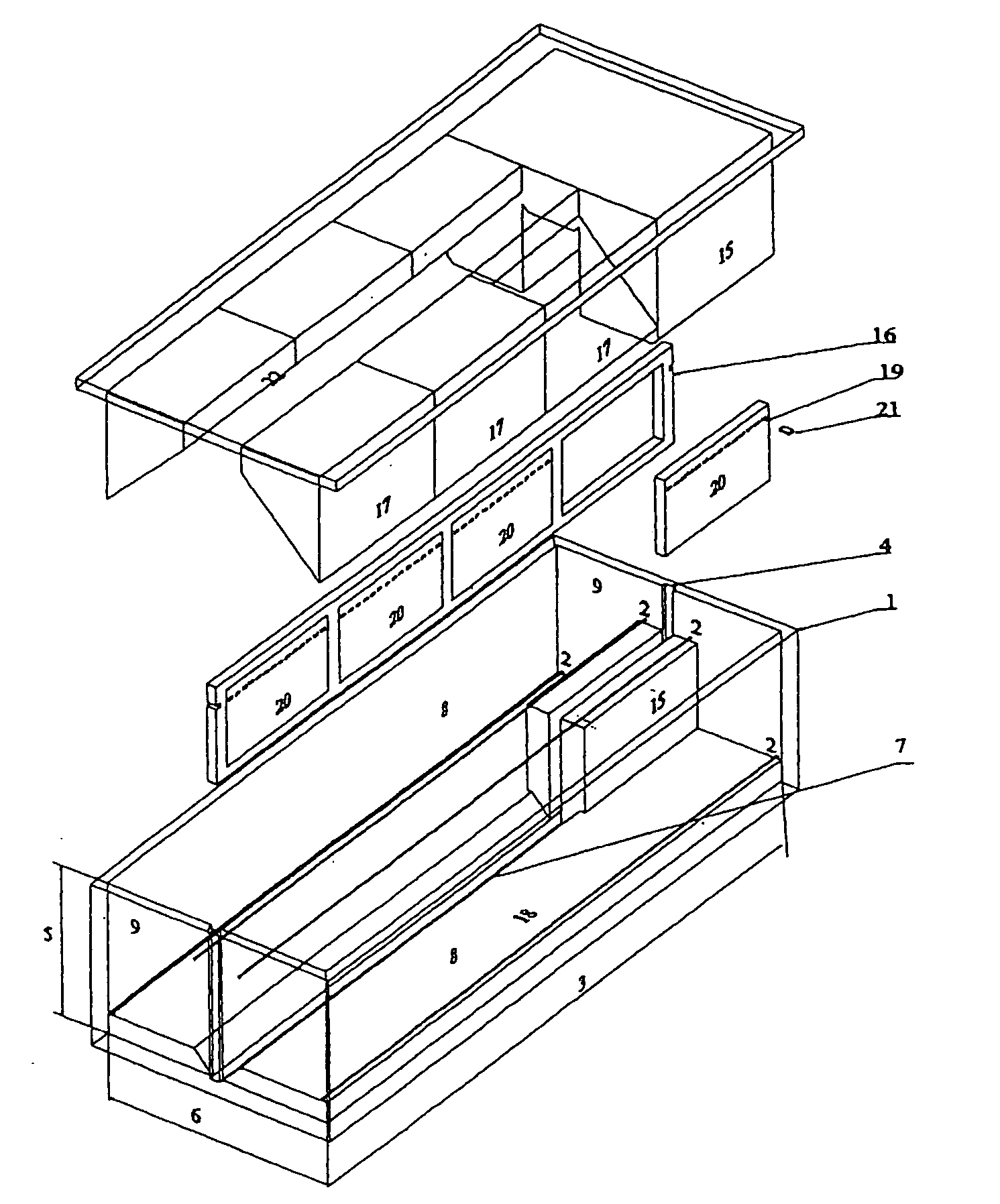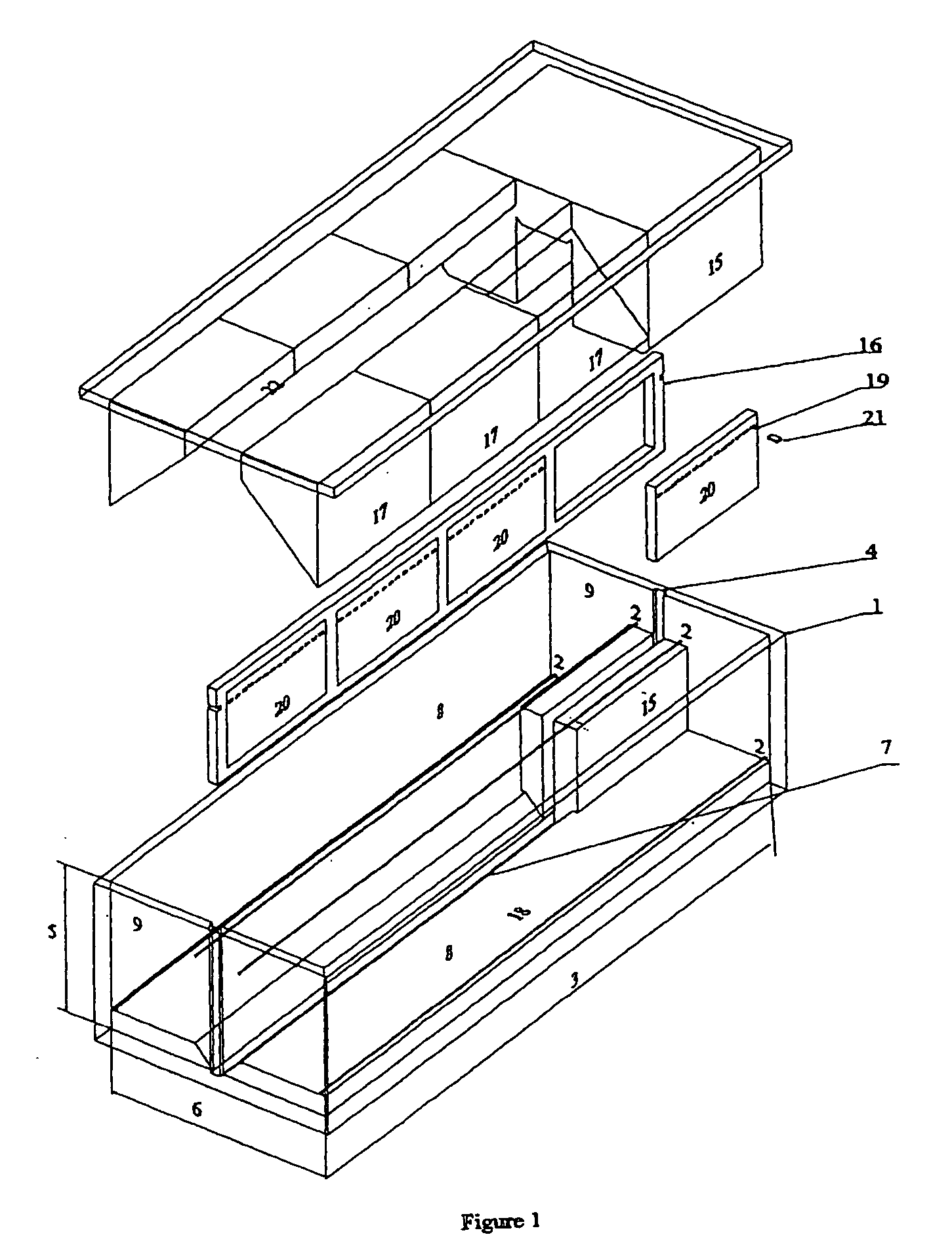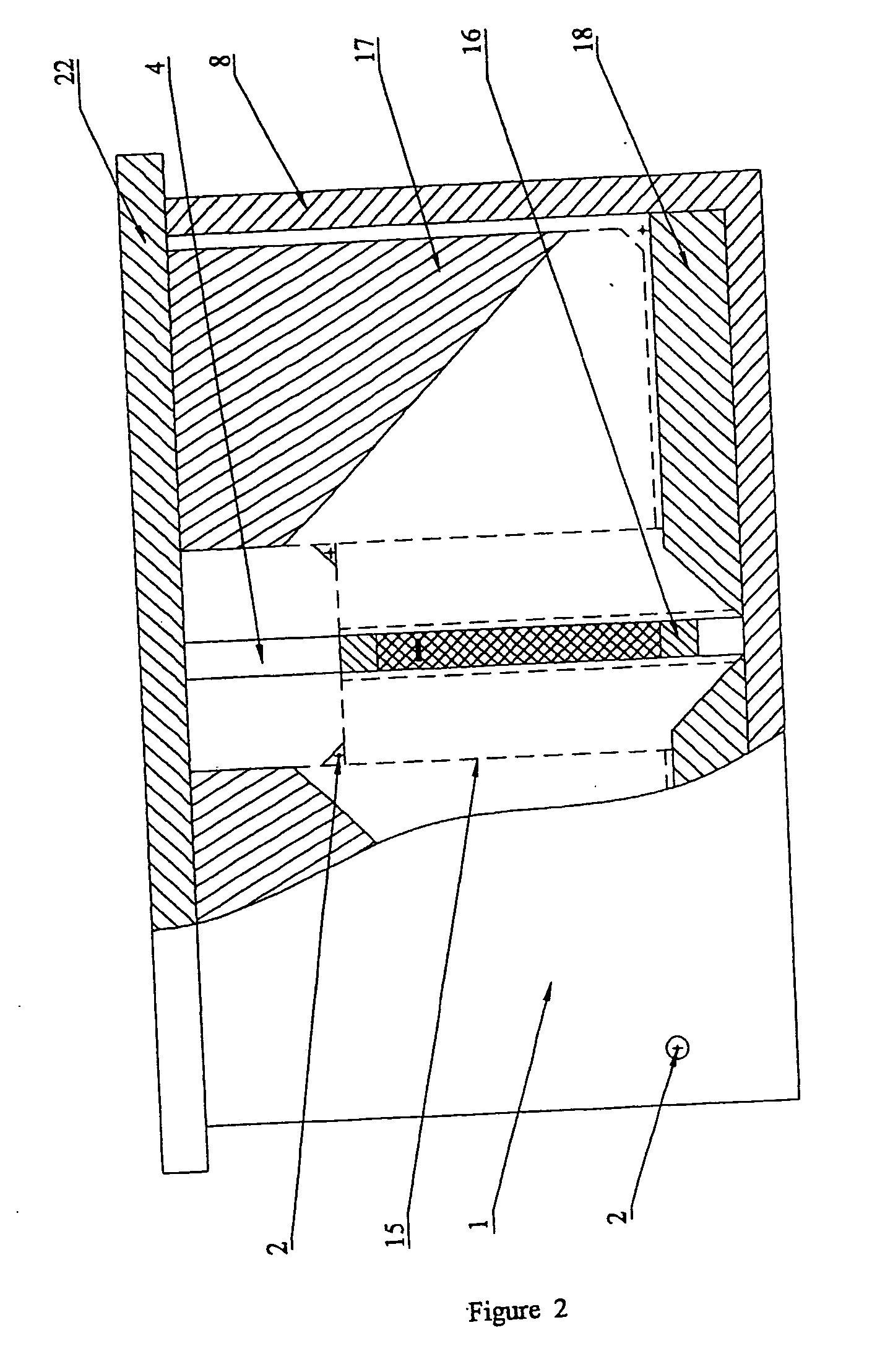The systems differ among them by the complexity of the
electronics to energize the electrodes and to switch the orientation of the
electric field.
Due to the absence of a theory that predicts the inversion mobility in FIGE under any experimental conditions, such inversion limits the use of these chambers to analyze the size of DNA molecules separated and to compare their band patterns.
In FIGE the size markers can also suffer mobility inversion and, as mentioned above, there is no theory capable to predict the moment and conditions of appearance of such inversion.
These are serious drawbacks of FIGE chambers, especially to compare many samples, for instance, in
molecular epidemiology studies.
It has been stated that the use of elevated voltages or high temperatures broaden and make diffuse the bands of the electrophoresis pattern, rendering poorly resolved bands.
Nevertheless, a common
disadvantage of the CHEF and TAFE equipments is that the chambers are unnecessarily large, because their dimensions have not been optimized yet, particularly when thin sample plugs are used.
III) The equipments are not economical, because large amount of expensive reagents (such as
Tris and
agarose) and biological samples are used.
An excessive increase of heat evolved will broaden and make the bands diffuse and will provoke
distortion of the electrophoresis pattern and even
entrapment of DNA molecules in the pores of the gel and the complete absence of migration.
Furthermore, they save laboratory bench space.
In addition, the use of thick samples does not improve the quality of the electrophoresis pattern and does not reveal more bands.
Therefore, they can inherit errors of the equipments from which they were designed.
In fact, the mini-equipments inherited from the large chambers an open
system for the preparation of the gel and the absence of a proper
system for attenuating turbulences of the buffer flowing throughout the chamber.
That is, the question whether this volume of buffer is enough to attenuate the turbulences during its circulation, or whether the irregularities in the gel and the differences in dimensions of the plugs influence the quality of the bands patterns that are obtained, are not resolved yet.
If the separation between the electrodes with opposite polarity is not optimal, for instance, if it is too large, then the dimensions of the gel, the chamber and the number of samples that can be applied in those gels will not be optimal.
If the plugs do not have the proper thickness and size, an excessive quantity of gel will be used and large electrophoresis time will be consumed.
In addition, the shape and distribution of the dimensions of the chambers as well as the existence of a single UEZ region determines that the reagents consumed in these chambers will not be used optimally.
From the above reasons, it is concluded that: Large chambers of the current PFGE systems are not optimal, because the separation between electrodes with opposite polarity is unnecessary large and the same amount of reagents is used, independently on the number of samples to be studied.
The chamber dimensions are not optimal.
They may affect the proper functioning of the systems.
Therefore, the comparison of the resulting band patterns will not be reliable.
Then, these three chambers have insufficiencies in their capacity to simultaneously analyze more than 8, 20 or 40 samples, respectively, or are insufficient the possibilities to increase the capacity of analysis.
However, in the TAFE
system, the samples loaded into the wells formed by the two combs would not be subjected to the same
electric field nor to identical reorientation angle; thus molecules of similar size would migrate different distances in the gel and the bands patterns would not be comparable.
These dielectrics considerable slow down the electrophoresis runs.
Then, in this type of chambers is impossible to increase the electric
field strength to reduce the electrophoresis time.
Low electric fields unnecessary enlarge the duration of PFGE experiments, fact that reduces the spectrum of applications of these chambers in the fields of the science and technology that require the rapid obtainment of results.
However, such broad UEZ would need a very wide minigel, which would present difficulties in its
casting and handling.
Additionally, several minigels could be accommodated, but according to formula I (see forward), this chamber would not be efficient when analyzing a small number of samples.
The reagents used in PFGE experiments are expensive.
This is impossible in chambers of a single UEZ because they use a constant volume of reagents.
Hence, the volume of reagents used by the TAFE Geneline I, Geneline II and MiniTAFE chambers is constant and independent on the number of samples to be analyzed, fact that impedes its optimal use.
The miniequipments previously reported are not optimum, because they do not have any system to attenuate turbulences of the
buffer solution flowing through the chamber, neither to prepare gel without irregularities nor to form thin sample plugs of similar sizes and shapes.
However, the quality of the band patterns and the experimental reproducibility are affected by variations in the
voltage and other factors.
They are: The chambers do not have simple devices to attenuate the turbulences of the buffer flowing through the chamber and the external heat exchange.
The accessories to cast the gels do not avoid the formation of irregularities and defects in the electrophoresis gel.
There are not devices to achieve a good alignment of the sample plugs in the migration origin either.
There are not devices to warrant maintaining the electrodes stretched.
However, at a given buffer injection velocity, turbulences in the chambers are generated.
The turbulences are increased if the buffer is circulated at high flow velocities.
However, this system is not efficient to attenuate buffer turbulence, mainly when high flow velocity is used.
Neither the TAFE nor the miniequipments have any system for attenuating the turbulences of the buffer flowing throughout the chamber, which is a
disadvantage.
It is easy to sense that the turbulences are more harmful in the miniequipments that use less amount of buffer.
However, the miniequipments for PFGE are relatively recent, maybe for this reason the development of a system for attenuating the turbulences of the buffer flowing through these chambers has not been a focus of attention.
The mold to prepare the TAFE gel has a lid, but it has not accessories to avoid the
meniscus formation among the teeth of the comb.
The gel wells are the origin of migration of the molecules; consequently, if the irregularities in these zones provoke changes in the velocity of migration of the molecules, the migration boundaries will be distorted.
However, the effect of the shape and dimension inequalities of the sample plugs upon the electrophoresis patterns has not been thoroughly studied.
However, these molds do not include devices to
cut the sample plugs with identical shape and dimensions and matching with the gel wells.
The flaws preparing the sample plugs and troubles in their alignment in the gel wells are exactly reproduced in the bands separated in the patterns, and might provoke tilted and undulated bands.
Besides that sample plug preparation could be longer using this
processing chamber, said mold does not have associated a device to
cut the sample plugs and, thus, plugs of similar sizes are not warranted to be obtained.
Them, the system used in the TAFE to set the electrodes has the
disadvantage that to pull tight the
electrode the experimenter must dismount the
electrode from the lid and this is very difficult.
However, it is not warranted that these electrodes are maintained stretched and consequently slight deformations of the lines of force of the electric field can occur.
Besides, it represents an additional expense of
platinum wire and them the chambers are more expensive.
Despite of the mentioned advantages, the refereed equipments have inadequacies that limit their application in the analysis of numerous samples.
They also recommend to be considered that both algorithms can give erroneous results such as DNA mobility inversion in the mid-range of the gel, when extremely wide size ranges are entered in both algorithms.
However, this relation is only valid in some experimental conditions and does not predict the resolution between any pair of molecules.
It means that they do not generated methods that permit the easy selection of the experimental conditions that separate a given group of molecules.
There is not a secure method to predict the pulse and run times hat should be applied at any conditions.
 Login to View More
Login to View More 


